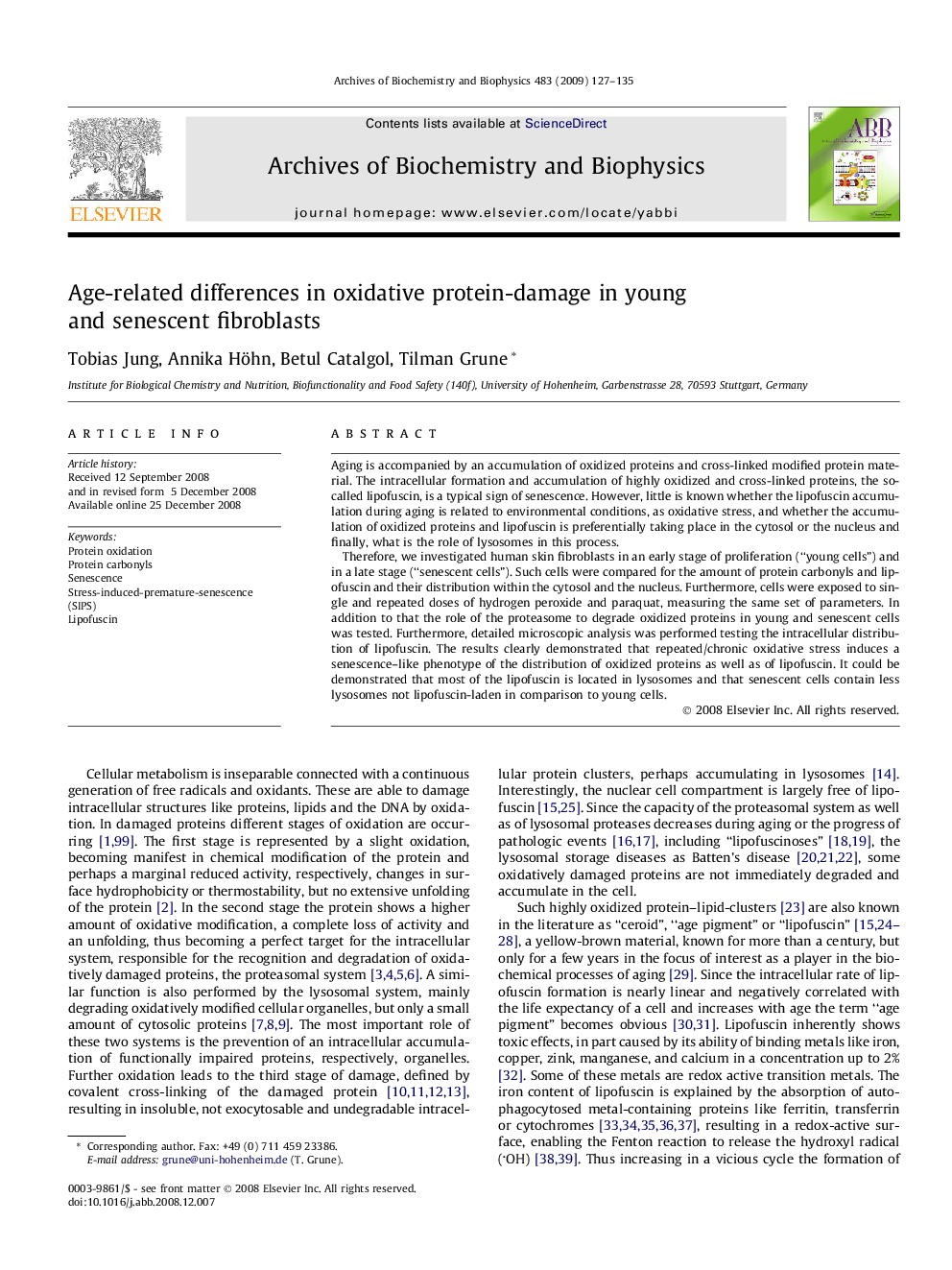| Article ID | Journal | Published Year | Pages | File Type |
|---|---|---|---|---|
| 1926481 | Archives of Biochemistry and Biophysics | 2009 | 9 Pages |
Aging is accompanied by an accumulation of oxidized proteins and cross-linked modified protein material. The intracellular formation and accumulation of highly oxidized and cross-linked proteins, the so-called lipofuscin, is a typical sign of senescence. However, little is known whether the lipofuscin accumulation during aging is related to environmental conditions, as oxidative stress, and whether the accumulation of oxidized proteins and lipofuscin is preferentially taking place in the cytosol or the nucleus and finally, what is the role of lysosomes in this process.Therefore, we investigated human skin fibroblasts in an early stage of proliferation (“young cells”) and in a late stage (“senescent cells”). Such cells were compared for the amount of protein carbonyls and lipofuscin and their distribution within the cytosol and the nucleus. Furthermore, cells were exposed to single and repeated doses of hydrogen peroxide and paraquat, measuring the same set of parameters. In addition to that the role of the proteasome to degrade oxidized proteins in young and senescent cells was tested. Furthermore, detailed microscopic analysis was performed testing the intracellular distribution of lipofuscin. The results clearly demonstrated that repeated/chronic oxidative stress induces a senescence–like phenotype of the distribution of oxidized proteins as well as of lipofuscin. It could be demonstrated that most of the lipofuscin is located in lysosomes and that senescent cells contain less lysosomes not lipofuscin-laden in comparison to young cells.
